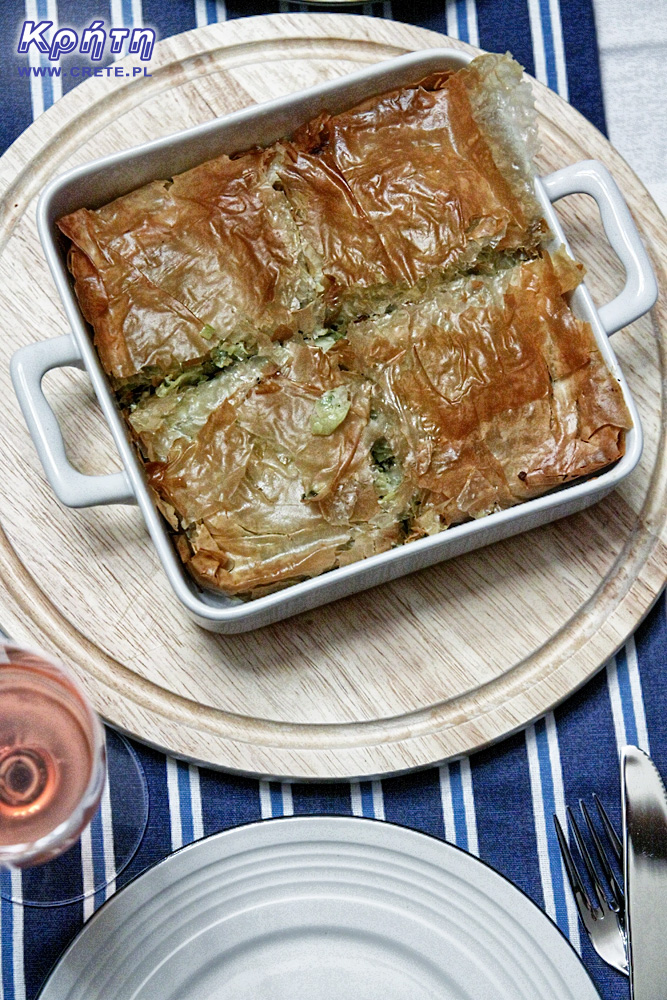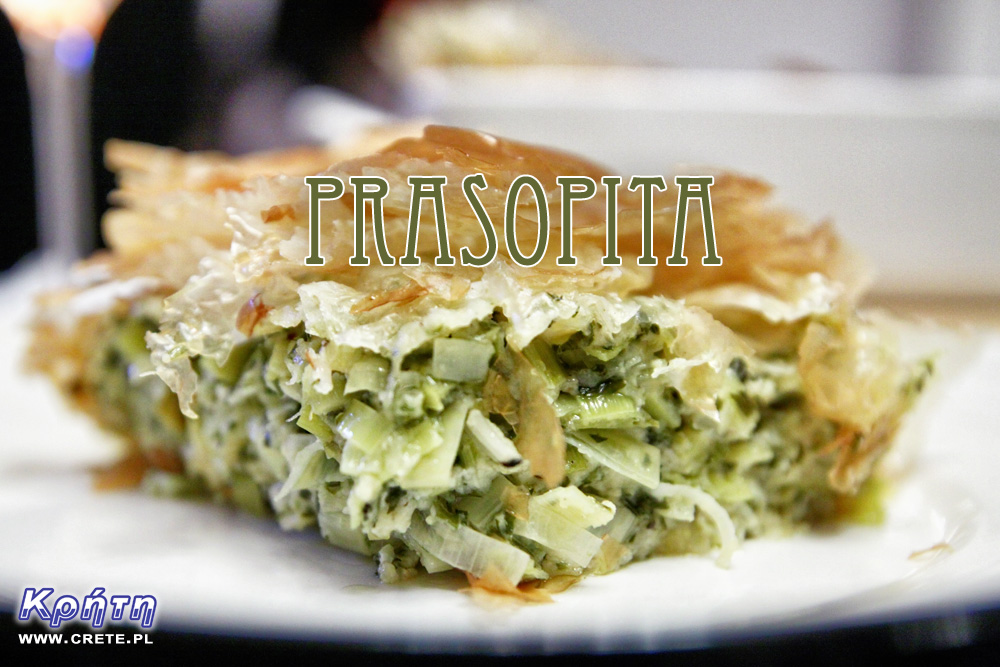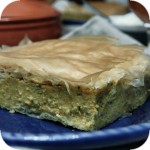

Prasopita is another Greek casserole made of filo pastry, but this time the main role in stuffing is Kefalograviera cheese and leeks, so it will be a favorite dish for those who prefer these vegetables. Prasopita needs to be seasoned differently, it will not be very expressive in taste.
Some Greeks add feta to the leeks, making this casserole sharper in taste, and white wine. We encourage you to try different versions :)
Unfortunately, the Greek Kefalograviera cheese in Poland is difficult to obtain, so you can substitute parmesan cheese with Gruyere instead.
1. We chop the white portions of pores thickly and fry in olive oil over medium heat for about 10 minutes. Then add the onion, salt, pepper, mix thoroughly and remove from the heat. We leave to cool.
2. When the pores are cooled down in a separate bowl, mix eggs, milk and cheese. Finally, add the fried pores and mix thoroughly. The stuffing is ready, so it's time to take care of filo pastry.
3. You can use ready-made filo for such baking, which must be thawed first. At the bottom we will need about 4-5 pieces of cake and a similar amount on top.
4. Each filo pastry, after placing in a baking dish, should be smeared with olive oil or melted butter. Fold the filo so that the sides of the cake protrude from the vessel so that later you can wrap them.
5. After placing all the layers of filo, apply the stuffing equally. As mentioned above, the filo sides are wrapped on top and each of them is also lubricated with oil or butter.
6. Then put the remaining sheets of cake on top of each other.
7. Bake the Prasopite at about 175 degrees C for about 35 minutes. If the filo becomes golden it will be a sign that the dish is ready :)
Καλή όρεξη!


Although the recipe for kolokithokeftedes has been on our site for a long time, we decided to publish the second version of the recipe. Kolokithokeftedes in this way we ate recently with our Cretan friends. Pancakes prepared in this way have tasted us so much that we asked for a way of preparing :)

Boureki is a very classic Cretan baked dish consisting mainly of two ingredients: potatoes and zucchini. In Cretan taverns you can find it in two versions: in dough and without dough.

Recently, we served a recipe for a spicy pumpkin pie baked in a sweet version. This, of course, is not the only way to prepare this universal vegetable. Greeks often also prepare a pumpkin roasted in filo, but with the addition of cheeses, on the salty.
Komentarze
Wypełnij poniższy formularz aby dodać komentarz